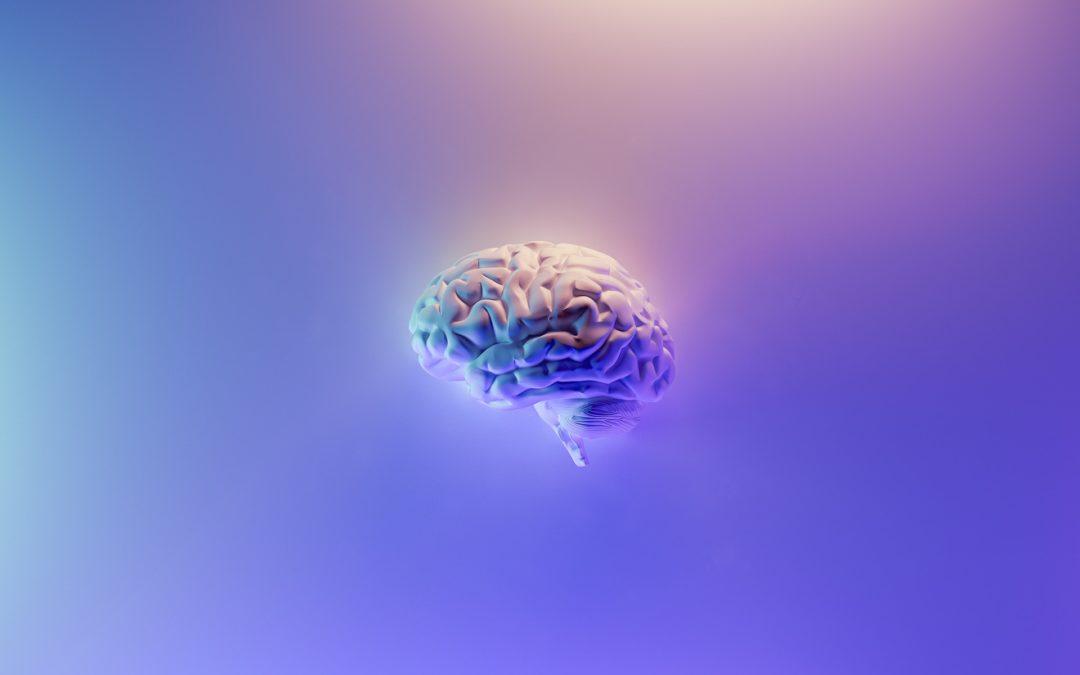In this article, we delve into the top 30 examples of neuroplasticity, showcasing its diverse applications and implications across various facets of human life. From stroke recovery to skill acquisition, mental health improvements to cognitive rehabilitation, these examples illuminate the incredible flexibility and adaptability of the brain. Each instance not only highlights the brain’s malleability but also demonstrates how harnessing neuroplasticity can revolutionize therapies, education, and personal development. Join us on this illuminating journey through the fascinating realms of neuroplasticity, unveiling the extraordinary capabilities of the human brain to reshape, rewire, and renew itself.
Neuroplasticity is the brain’s remarkable ability to reorganize and adapt throughout an individual’s life, shaping our experiences, learning, and recovery from injuries. It is the brain’s inherent capacity to form new neural connections, alter existing pathways, and rewire its structure in response to learning, environmental changes, or damage. Understanding neuroplasticity provides insights into how our brains evolve, adapt, and recover, offering hope and opportunities for enhanced learning, rehabilitation, and overall well-being.
What is Neuroplasticity?
Neuroplasticity, also known as brain plasticity, refers to the brain’s remarkable ability to reorganize itself by forming new neural connections throughout life. This adaptive capacity allows the brain to change and adapt in response to experiences, learning, and environmental influences. Neuroplasticity plays a crucial role in learning, memory, recovery from brain injury, and skill acquisition. Understanding neuroplasticity highlights the brain’s dynamic nature and its potential for growth and adaptation.
This phenomenon encompasses various mechanisms that enable the brain to rewire and remodel its structure and function. It involves synaptic plasticity, where existing connections between neurons strengthen or weaken in response to activity, and structural plasticity, which involves the formation of new neurons, dendrites, or synapses. Neuroplasticity is influenced by factors such as learning, repetitive practice, environmental enrichment, and even psychological states like attention and motivation.
Studies have shown that neuroplasticity remains present throughout life, challenging the previously held belief that the brain’s structure is fixed after a certain age. This understanding has led to innovative therapies and interventions that harness the brain’s plasticity to aid in rehabilitation after brain injuries, enhance cognitive abilities, and treat various neurological conditions.
The discovery of neuroplasticity has profound implications for education, therapy, and overall brain health. By recognizing the brain’s ability to adapt and change, individuals can engage in activities and experiences that promote positive brain remodeling, fostering lifelong learning, resilience, and well-being.
The Best Examples of Neuroplasticity
1. Learning a New Skill – When you embark on learning a new skill, such as playing a musical instrument or mastering a sport, your brain undergoes a remarkable process of creating new neural pathways. This involves the formation of synapses and the strengthening of connections between neurons. As you practice and refine the skill, these neural pathways become more efficient, illustrating the brain’s adaptability and capacity for continuous learning.
2. Bilingualism – The acquisition and use of multiple languages trigger structural changes in the brain. Research suggests that bilingual individuals exhibit increased gray matter density in regions associated with language processing and executive control. The constant need to switch between languages enhances cognitive functions, showcasing how neuroplasticity is not only about specific skills but also about broader cognitive enhancements.
3. Memory Formation – The formation of memories is a complex process involving the alteration of neural connections. Synaptic plasticity, the ability of synapses to strengthen or weaken over time, plays a crucial role in memory formation. Whether it’s short-term or long-term memory, the dynamic nature of these neural connections exemplifies the neuroplasticity inherent in the brain’s memory systems.
4. Recovery from Brain Injury – After experiencing a stroke or traumatic brain injury, the brain can undergo a remarkable process of reorganization to compensate for lost functions. Neurons in undamaged areas may take on new roles, and the brain can establish alternative pathways to restore motor or cognitive functions. This adaptability is a key factor in the rehabilitation and recovery process.
5. Cognitive Training – Engaging in cognitive exercises and challenges is a deliberate way to stimulate neuroplasticity. These activities encourage the formation of new synaptic connections and can lead to improvements in overall cognitive function, including memory, attention, and problem-solving skills. It’s a proactive approach to maintaining and enhancing cognitive abilities throughout life.
6. Physical Exercise – Regular physical activity, particularly aerobic exercise, has been consistently linked to enhanced neuroplasticity. Exercise promotes the release of neurotrophic factors, such as BDNF, which support the growth and survival of neurons. The structural changes observed in the brains of physically active individuals underscore the bidirectional relationship between physical health and cognitive function.
7. Meditation and Mindfulness – Practices like meditation, which involve focused attention and mindfulness, induce changes in both the structure and function of the brain. Neuroimaging studies reveal alterations in the size and connectivity of brain regions associated with attention, emotional regulation, and self-awareness. These changes emphasize the transformative impact of mental training on the brain.
8. Music Therapy – Whether you’re playing a musical instrument or simply listening to music, the brain responds with neuroplastic changes. Musical activities engage multiple brain regions, including those responsible for auditory processing, motor control, and emotional regulation. The plasticity observed in musicians’ brains highlights the profound effects that musical experiences can have on neural architecture.
9. Social Interaction – Engaging in social activities and maintaining strong social connections is not only crucial for emotional well-being but also positively impacts brain plasticity. Social interactions stimulate the brain’s reward system and promote the release of oxytocin, a hormone associated with social bonding. The dynamic nature of social relationships contributes to ongoing neuroplastic changes.
10. Visual Impairment – In individuals with visual impairments, the brain adapts to the absence of visual input by heightening other sensory modalities, such as touch and hearing. This cross-modal plasticity involves the recruitment of brain regions usually dedicated to vision for processing information from other senses. It showcases the brain’s ability to reorganize in response to sensory challenges, highlighting the complexity of neuroplasticity.
11. Childhood Development – The brains of children are exceptionally plastic, allowing for rapid learning and adaptation to new environments. Early experiences shape the neural circuits that form the foundation for future cognitive, emotional, and social development. The critical periods during childhood underscore the significance of a stimulating and nurturing environment in promoting optimal neuroplasticity.
12. Post-Traumatic Stress Disorder (PTSD) Recovery – Therapeutic interventions for PTSD, such as exposure therapy and cognitive-behavioral therapy, induce positive changes in brain function and structure. The brain’s ability to reframe traumatic memories and modify emotional responses exemplifies how targeted interventions can leverage neuroplasticity to alleviate the symptoms of mental health conditions.
13. Chronic Pain Management – Strategies like mindfulness and cognitive-behavioral therapy play a crucial role in chronic pain management by inducing neuroplastic changes. These approaches can alter the perception of pain, modulate pain-related brain circuits, and enhance coping mechanisms. The brain’s capacity to adapt in the context of chronic pain underscores the potential for non-pharmacological interventions.
14. Neurofeedback – Neurofeedback is a technique that involves training individuals to control their brain activity voluntarily. This form of biofeedback aims to modify neural patterns associated with certain conditions, such as attention deficit hyperactivity disorder (ADHD) or anxiety. The lasting changes in neural connections resulting from neurofeedback highlight the malleability of the brain through intentional training.
15. Stroke Rehabilitation – Specialized rehabilitation programs for stroke survivors capitalize on neuroplasticity to promote the recovery of both motor and cognitive functions. Through targeted exercises and interventions, the brain can reorganize neural networks, facilitating the restoration of abilities affected by the stroke. The rehabilitation process emphasizes the importance of harnessing the brain’s adaptive capabilities.
16. Hormonal Influence – Hormones, including cortisol and estrogen, play a modulatory role in neuroplasticity, affecting learning and memory processes. For instance, stress hormones like cortisol can influence synaptic plasticity, impacting the consolidation of memories. Hormonal fluctuations across the lifespan contribute to the nuanced interplay between endocrine function and brain plasticity.
17. Artificial Intelligence and Brain-Computer Interfaces – The integration of AI and brain-computer interfaces represents a frontier in neuroplasticity. These interfaces enable direct communication between the brain and external devices, potentially reshaping neural networks. As technology advances, the collaboration between human brains and artificial intelligence raises ethical and neuroplasticity-related questions about the future of human cognition and interaction.
18. Psychedelic Therapy – Emerging research suggests that certain psychedelics, such as psilocybin and MDMA, may promote neuroplasticity and have therapeutic effects on mental health conditions. These substances appear to induce alterations in brain connectivity and may facilitate novel perspectives and emotional processing. The exploration of psychedelics in therapeutic contexts highlights the potential for inducing positive neuroplastic changes.
19. Environmental Enrichment – Exposure to a stimulating environment with varied sensory experiences enhances neuroplasticity, particularly in animals. Enriched environments, characterized by increased social interactions, cognitive challenges, and physical activity, lead to structural changes in the brain. This phenomenon extends the understanding of neuroplasticity beyond individual experiences to the broader influence of environmental factors.
20. Aerobic Exercise – Cardiovascular exercise, such as running or cycling, has been linked to increased levels of BDNF, a protein associated with neuroplasticity. The release of BDNF promotes the growth and survival of neurons, particularly in the hippocampus, a region crucial for learning and memory. The positive impact of aerobic exercise on brain health underscores the holistic connection between physical fitness and cognitive function.
21. Reading and Education – Lifelong learning and intellectual stimulation contribute significantly to the maintenance of cognitive function and neuroplasticity. Reading engages multiple brain regions, fostering cognitive flexibility and expanding neural networks. The continuous pursuit of knowledge throughout life exemplifies an active approach to supporting the brain’s plasticity.
22. Yoga – The practice of yoga, which combines physical postures, breath control, and meditation, may influence brain plasticity. Studies suggest that yoga can induce changes in brain structure, including alterations in the size of the hippocampus and amygdala. The integration of mind-body practices in promoting neuroplasticity highlights the interconnectedness of mental and physical well-being.
23. Cognitive Behavioral Therapy (CBT) – CBT is a therapeutic approach that targets patterns of thought and behavior to address various mental health conditions, including anxiety and depression. The efficacy of CBT is linked to its ability to induce changes in neural pathways. The restructuring of maladaptive thought patterns reflects the brain’s adaptability to intentional therapeutic interventions.
24. Virtual Reality Therapy – Immersive virtual environments have been employed as a therapeutic tool to induce neuroplastic changes in the treatment of various mental health conditions, such as phobias and PTSD. Exposure to controlled virtual stimuli can elicit emotional and cognitive responses, leading to the reorganization of neural circuits. Virtual reality therapy exemplifies the innovative applications of technology in leveraging neuroplasticity for mental health.
25. Nutrition and Brain Health – A balanced diet rich in nutrients is essential for supporting brain function and may influence neuroplasticity positively. Nutrients such as omega-3 fatty acids, antioxidants, and vitamins play roles in neurogenesis, synaptic plasticity, and overall brain health. The intricate relationship between dietary factors and the brain underscores the importance of a holistic approach to well-being.
26. Sleep and Memory Consolidation – Adequate and quality sleep is crucial for the consolidation of memories and the overall functioning of neuroplastic processes. During sleep, the brain undergoes processes that strengthen synaptic connections formed during waking hours. Disruptions in sleep patterns can adversely affect cognitive function and compromise the brain’s ability to undergo neuroplastic changes.
27. Chronic Stress Impact – Prolonged exposure to stress hormones, such as cortisol, can have both short-term and long-term effects on brain structure and function. Chronic stress can lead to structural changes in the hippocampus, a region associated with memory and stress regulation. The negative impact of chronic stress highlights the importance of stress management in preserving neuroplasticity.
28. Environmental Toxins – Exposure to certain toxins can negatively impact neuroplasticity, emphasizing the importance of a healthy environment. Environmental pollutants, heavy metals, and other toxins can interfere with synaptic function and neural connectivity. The susceptibility of the brain to environmental factors underscores the need for environmental awareness and protection.
29. Mind-Body Practices – Techniques like tai chi and qigong, which combine physical movement with mental focus, may contribute to neuroplasticity. These mind-body practices engage both the body and the mind, promoting relaxation and stress reduction. The integration of movement and mindfulness in these practices reflects the interconnected nature of physical and mental well-being.
30. Brain-Computer Interfaces in Neuroprosthetics – The development of brain-computer interfaces represents a groundbreaking application of neuroplasticity. These interfaces allow direct communication between the brain and external devices, offering possibilities for neuroprosthetics and enhanced cognitive abilities. The adaptability of the brain to interface with technology opens new frontiers in the integration of human cognition and artificial intelligence.
How to Increase Neuroplasticity?
Boosting neuroplasticity involves engaging in activities and adopting habits that stimulate the brain’s ability to adapt and change. Here are some lifestyle practices that may enhance neuroplasticity.
Learn Continuously – Engage in lifelong learning by picking up new skills, hobbies, or languages. The process of acquiring new knowledge encourages the formation of new neural connections.
Stay Physically Active – Regular aerobic exercise has been linked to increased levels of brain-derived neurotrophic factor (BDNF), a protein associated with neuroplasticity. Aim for activities that get your heart rate up.
Practice Mindfulness and Meditation – Mindfulness meditation has been shown to induce structural changes in the brain. Practices that involve focused attention, such as meditation, promote neuroplasticity by altering neural pathways.
Get Quality Sleep – Ensure you get sufficient and restorative sleep. Sleep is crucial for memory consolidation and overall brain health, supporting neuroplastic processes.
Balanced Nutrition – Maintain a healthy and balanced diet rich in omega-3 fatty acids, antioxidants, and nutrients. Certain foods support brain function and neuroplasticity.
Socialize and Build Relationships – Regular social interaction stimulates various brain regions, promoting emotional well-being and cognitive flexibility.
Challenge Your Brain – Engage in mentally stimulating activities like puzzles, games, or strategic thinking exercises. Novel challenges encourage the formation of new neural connections.
Explore Music and Arts – Playing a musical instrument, listening to music, or engaging in artistic activities can stimulate different areas of the brain, fostering neuroplastic changes.
Practice Yoga or Tai Chi – Mind-body practices like yoga and tai chi combine physical movement with mental focus, promoting relaxation and potentially influencing neuroplasticity.
Limit Stress – Chronic stress can have detrimental effects on the brain. Adopt stress management techniques such as deep breathing, meditation, or regular breaks to mitigate its impact.
Remember, the key is to maintain a lifestyle that promotes overall well-being. Consistency is crucial, and adopting these practices as part of your routine can contribute to a brain that is more adaptable and resilient over time.
Which Part of The Brain Where Neuroplasticity Takes Place?
Specific regions are particularly associated with neuroplastic changes. The two main areas involved are the hippocampus and the cerebral cortex.
- Hippocampus
- Function: The hippocampus is crucial for learning and memory processes, including the formation of new memories and spatial navigation.
- Neuroplasticity: Neuroplasticity in the hippocampus is often associated with the creation of new neural connections and the strengthening of existing ones. This is essential for learning and memory adaptation.
- Cerebral Cortex
- Function: The cerebral cortex is responsible for various cognitive functions, including perception, language, and reasoning.
- Neuroplasticity: Different areas of the cerebral cortex can undergo neuroplastic changes based on experience, learning, and environmental stimuli. This adaptability is fundamental for acquiring new skills and adjusting to changes in the environment.
It’s important to note that neuroplasticity is not limited to these regions. The entire brain has the capacity for plasticity, allowing for continuous changes in response to experiences, environmental factors, and learning. The concept of neuroplasticity challenges the traditional view that the brain is a fixed and unchanging organ, highlighting its dynamic and adaptable nature throughout life.
What is the Importance of Neuroplasticity?
Neuroplasticity is important because it shows that our brains can change and adapt throughout our lives. It means that we’re not stuck with the way our brains are; we can learn new things, recover from injuries, and improve how we think. This flexibility is like a superpower for our brains, allowing us to grow, learn, and overcome challenges. Understanding neuroplasticity is crucial for education, rehabilitation after injuries, and finding ways to enhance our mental well-being. It gives us hope and the ability to shape our brains positively through experiences and intentional efforts, contributing to a more resilient and adaptable mind.
Types of Neuroplasticity
There are a few types of neuroplasticity, each showcasing the brain’s remarkable ability to adapt and change:
1. Synaptic Plasticity: This is the most common form of neuroplasticity. It involves changes in the strength or efficiency of connections between neurons (synapses). There are two primary forms:
- Long-term potentiation (LTP): This is the strengthening of synapses based on repeated patterns of activity. When neurons are stimulated together repeatedly, the connection between them gets stronger, facilitating faster and more efficient signaling.
- Long-term depression (LTD): Conversely, this weakens synaptic connections due to prolonged low-frequency stimulation or lack of stimulation. It helps in eliminating unnecessary connections and fine-tuning the brain’s circuitry.
2. Structural Plasticity: This type involves physical changes in the brain’s structure, such as the growth of new dendrites (branches of neurons) or the formation of new synapses. Structural plasticity allows the brain to adapt to new experiences, learn new things, and recover from injuries by rewiring neural networks.
3. Functional Plasticity: This refers to the brain’s ability to redistribute tasks across different areas. For instance, if one part of the brain is damaged, another area might take over its function. It’s crucial in cases of injury or stroke to help individuals regain lost abilities.
4. Adaptive Plasticity: This is a broad term covering various ways the brain adapts to changes, including learning new skills, adjusting to environmental changes, or compensating for damage.
Each type of neuroplasticity plays a vital role in learning, memory formation, recovery from injuries, and overall adaptation to the environment. These processes occur throughout life, allowing the brain to continuously rewire itself in response to experiences and challenges.
The Most Popular on BitGlint

40 Social Dilemma Examples in the World & Real Life
Social dilemmas are everywhere. They shape the choices we make at work, in our communities, and even on a global...

30 Favor Examples & Definition
Doing a favor means helping someone without expecting anything in return. It’s an act of kindness that can strengthen...

30 Naivety Examples & Definition
Naivety is something most people experience at some point in their lives. It often starts in childhood, but for some,...

20 Chronology Examples & Meaning
Chronology is something we use more than we realize. It shows up in conversations, in how we remember the past, and in...

30 Wishful Thinking Examples & Meaning
Wishful thinking is something we all do at some point. You hope things will turn out fine—even if there’s no real...

20 Examples of Gravity & What Gravity Really Is
Gravity is one of the most important forces in the universe, but many people don’t fully understand what it really is...

20 Examples of Secondary Consumers in the Food Chain
Secondary consumers are animals that eat other animals—usually herbivores that feed on plants. They’re an important...
Get Inspired with BitGlint

